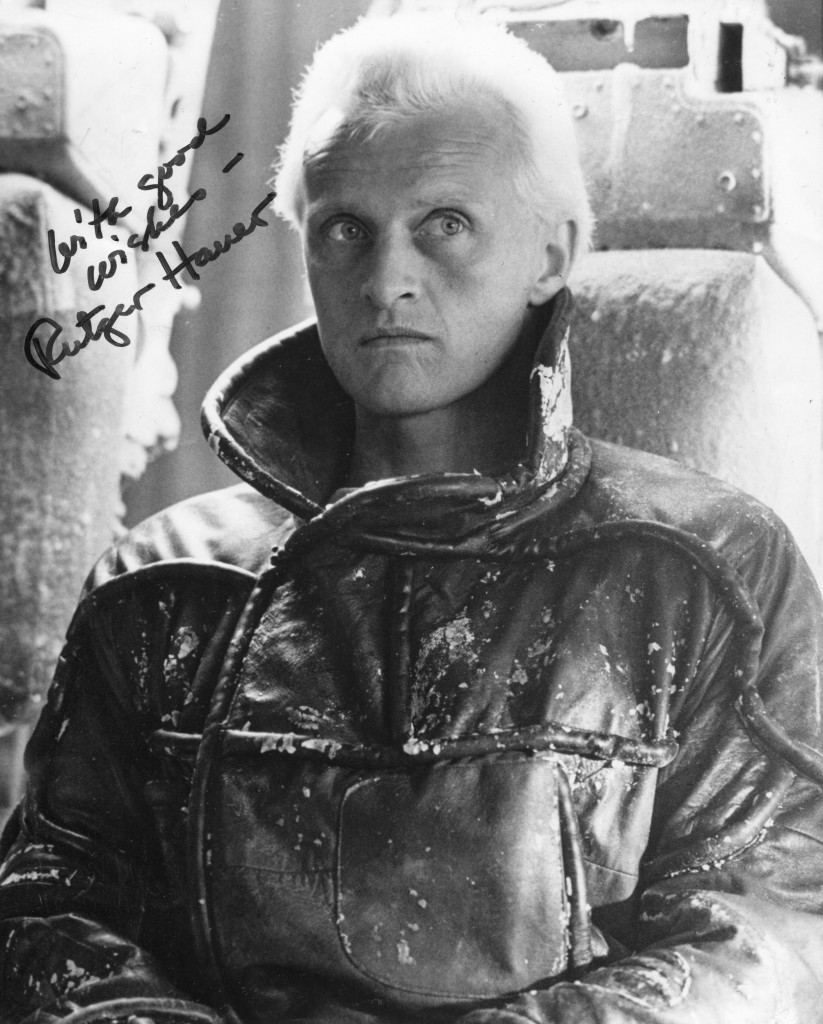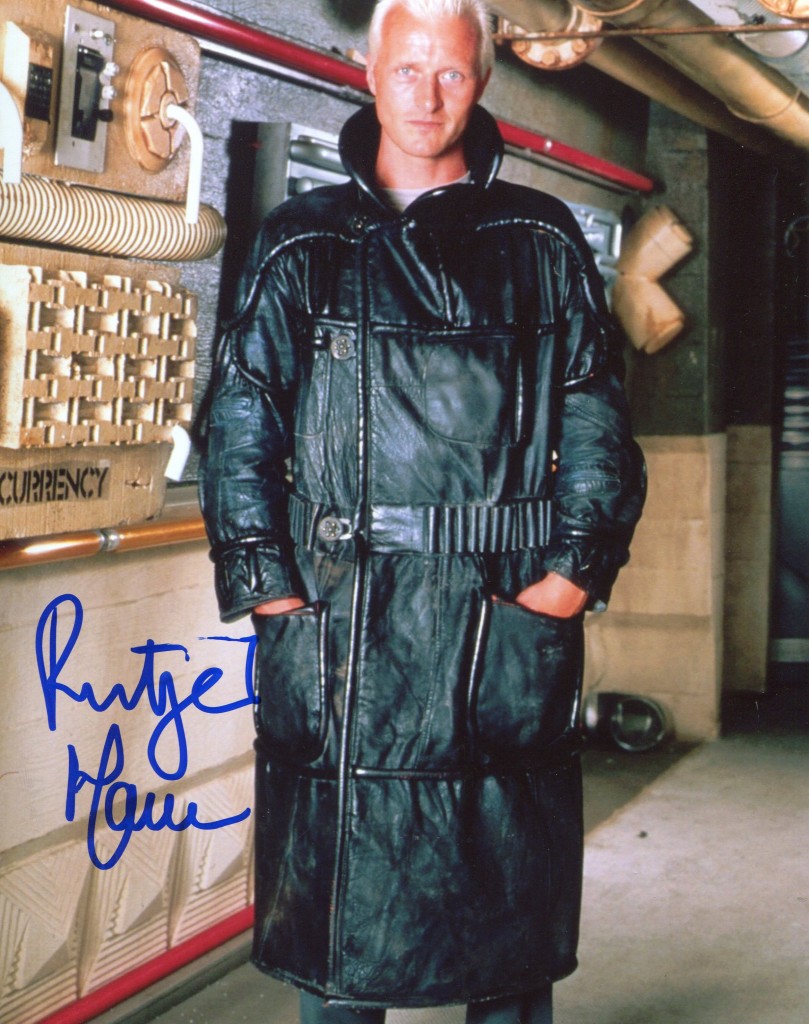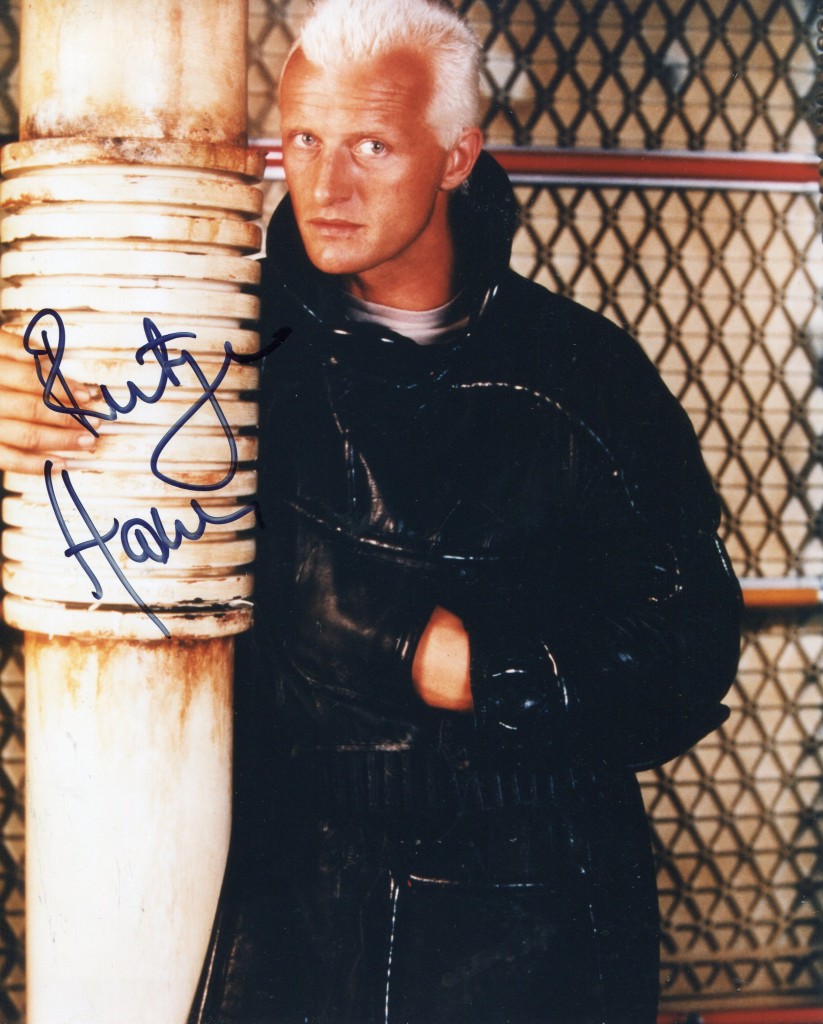
Rutger Hauer obituary in “The Guardian” in 2019
The source of much of the plangent poetry in Ridley Scott’s 1982 sci-fi drama Blade Runner was the electrifying and ruminative performance by the Dutch actor Rutger Hauer, who has died aged 75 after a short illness. Hauer played Roy Batty, a replicant in a futuristic society who revolts against his foreshortened existence by going rogue and demanding a longer lifespan; when he discovers that this request is impossible to grant, he crushes his creator’s head in his hands.
Despite such extreme moments, Roy ended the film not as a villain but as a sympathetic creature tormented by his own mortality. Rather than killing his pursuer, played by Harrison Ford, Roy saves his life and then makes him an audience for a brief reminiscence – “I’ve seen things you people wouldn’t believe” – before surrendering stoically to his own inevitable demise: “Time to die.”
Contrary to rumour, Hauer did not improvise that monologue, though he did cut most of the written version while adding a few lines of his own, including that final one.

Though the film was not a box-office success, Hauer’s appearance chimed neatly with the new wave futurism in vogue at the time, adding to the picture’s cult appeal. With his platinum hair, black leather trenchcoat, eyebrows so faint as to be non-existent and, at one point, a white dove as an accessory, he could have stepped off the set of that week’s Top of the Pops.
If Blade Runner secured his reputation internationally, it was the popular series of “Pure Genius” commercials for Guinness, which ran from 1987 until 1994, that made him a multimillionaire. He was chosen by the ad agency, Ogilvy & Mather, because of his physical resemblance to the beer in question.Advertisement
“The star’s blond hair was a symbol of the foamy head on a pint,” noted Campaign magazine. Though not a Guinness fan (“I’d rather drink milk”), he starred in more than 20 commercials that maintained an unvarying level of refrigerated quirkiness; in one, he mused on his former life on Mars, while in another he sat beside an aquarium window and assured viewers: “It’s not easy being a dolphin.”
Hauer was born in Breukelen to Arend Hauer and Teunke (nee Mellema), actors who also ran a drama school in nearby Amsterdam. He abandoned education at 16 for the sea, scrubbing decks on freighters for a year. Stints as an electrician and a carpenter followed, and he briefly enrolled at acting school before being expelled for missing classes. A stretch in the army ended when he was discharged for “psychological unfitness”. He took up acting again in earnest, completed a three-year course and joined a touring theatre company.
Playing a Robin Hood figure in the TV adventure series Floris (1969), set in the middle ages, made him a star in his homeland; he reprised the part in the West German remake Floris von Rosemund (1975). When Paul Verhoeven, the director of the original show, moved into cinema, he took Hauer with him, casting the actor in five films beginning with Turkish Delight (1973), in which he played a sculptor embroiled in a volatile relationship. “I’m naked for three-quarters of the film,” he later said. “In Hollywood, they called it pornography.”

Next came Verhoeven’s lavish period drama Katie Tippel (1975) and his barbed wartime yarn Soldier of Orange (1977). Reviewing the latter, Janet Maslin in the New York Times identified the actor’s enigmatic essence: “Though the screenplay provides him with every opportunity to turn matinee idol, Mr Hauer shows little interest in making himself adorable, and that in itself is intriguing.”
After Verhoeven’s sexually explicit biker drama Spetters (1980), Hauer made his Hollywood debut in Nighthawks (1981), as a charming, callous terrorist hunted by two cops (Sylvester Stallone and Billy Dee Williams). “I had a lot of problems on that film, principally with Stallone,” he recalled. “I had to fight him on the level of what I thought was good enough for the part and what he thought was good enough. I was very angry, very aggressive, very alert, very awake. I don’t think I’ve been more motivated or done better work.”
In the wake of Blade Runner, he was in Nicolas Roeg’s underrated gold-rush saga Eureka and Sam Peckinpah’s disappointing swansong, The Osterman Weekend (both 1983). He was reunited with Verhoeven for the director’s first US venture, the gory medieval drama Flesh+Blood, and stayed in period dress for the more family-friendly Ladyhawke (both 1985) with Michelle Pfeiffer.
In the cat-and-mouse thriller The Hitcher (1986), he was a psychopath who hides a victim’s severed fingers in a portion of French fries and tears a woman in half by tying her to two trucks. “I think in my darker characters I go a little further than most American actors,” he said. “Maybe it’s because I’m not afraid of that side of myself.”
He mixed high and low culture projects with ease. He won a Golden Globe for his portrayal of an inmate at a Nazi death camp in the TV movie Escape from Sobibor (1987) and played a homeless alcoholic in The Legend of the Holy Drinker (1988), which won the Golden Lion at the Venice film festival.
But he was a good fit, too, as a vampire in the original, unloved film of Buffy the Vampire Slayer (1992), and returned to blood-sucking in 2013 for episodes of the HBO series True Blood. Though it was not true that the novelist Anne Rice had Hauer in mind when writing the main character of Lestat in her novel, Interview with the Vampire, she did concede that he “is surely how I see my beloved … hero”.
He worked solidly, often in straight-to-video material, but reached wider audiences through small parts in George Clooney’s directorial debut, Confessions of a Dangerous Mind (2002), and the hits Sin City and Batman Begins (both 2005).
He played the title role in the exploitation thriller Hobo with a Shotgun (2011) and Van Helsing in Dario Argento’s Dracula 3D (2012), and was glimpsed more recently in Luc Besson’s intergalactic romp Valerian and the City of a Thousand Planets (2017) and Jacques Audiard’s acclaimed western The Sisters Brothers (2018). He was also the subject of a 2006 documentary, Blond Blue Eyes, and wrote an autobiography, All Those Moments: Stories of Heroes, Villains, Replicants and Blade Runner, the following year.
He is survived by his wife, Ineke Ten Cate, an artist and actor, his daughter, Aysha, from his first marriage to Heidi Merz, which ended in divorce, and by his grandson, Leandro.
• Rutger Oelsen Hauer, actor, born 23 January 1944; died 19 July 2019Topics

